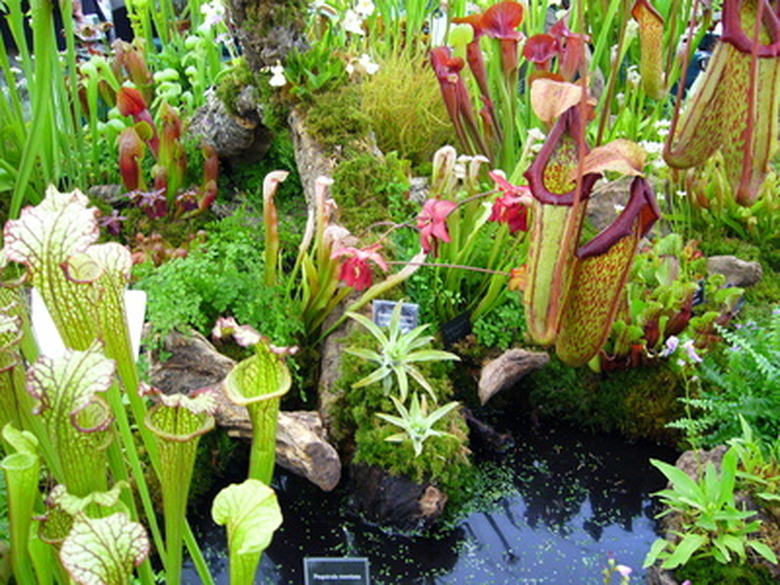The Life Cycle Of A Pitcher Plant
Pitcher plants (Sarracenia) are carnivorous or insectivorous species that consume insects by luring them into large, colorful, hollow leaves that resemble open-mouthed or hooded vessels. These vessel-shaped "pitchers" are filled with digestive enzymes that transform the insects into nourishment for the plants. Pitcher plants belong to the Sarraceniaceae family. At least 10 pitcher plants species are native to eastern North American, flourishing in open bogs and swampy areas. A related carnivorous genus, Darlingtonia, is native to some areas of the Pacific coast.
Pollination
In early to mid-spring, pitcher plants produce flowers in a variety of colors, depending on the species. Some species' flowers are deep burgundy and resemble raw meat. The thin flower petals move with the wind, attracting pollinating insects, including bees and gnats, that come in search of nectar.
- Pitcher plants (Sarracenia) are carnivorous or insectivorous species that consume insects by luring them into large, colorful, hollow leaves that resemble open-mouthed or hooded vessels.
- These vessel-shaped "pitchers" are filled with digestive enzymes that transform the insects into nourishment for the plants.
Seed Capsules
The pollinated plants' pistils, sepals and seed capsules remain after the short-lived flower petals have fallen.The seed capsule ripens through the summer, opening at the end of the season to disperse the small brown seeds.
Germination
The seeds germinate, produce a pair of seed leaves, or cotyledons, then immediately produce tiny pitchers. As the plants grow older they produce successively larger pitchers, until, after a few years of growth, the plants are mature.
Rhizomes and Fire
Mature pitcher plants develop large, fleshy roots, or rhizomes. The rhizomes are resistant to the naturally occurring fires that are frequent in the areas commonly inhabited by pitcher plants. The fires are important to the pitcher plants' survival by burning away excess vegetation that would otherwise prevent them from getting the sunlight they need to thrive.
New Growth
Each season, new leaves or pitchers sprout from the rhizomes. Most Sarracenia have erect pitchers. Flying and crawling insects are attracted to the nectar secreted by glands on the lips of these specialized leaves. Insects that fall into the hollow leaves cannot crawl back up the slippery inner walls and are digested by the plant. The digested prey provide the plant with the nutrients it needs to survive.
- The pollinated plants' pistils, sepals and seed capsules remain after the short-lived flower petals have fallen.
Interruption in the Life Cycle
Because they are colorful and exotic, pitcher plants have become extremely popular in the florists' trade, which has increased the number of plants collected in the wild. This endangers wild populations and, ultimately, the survival of some species.
